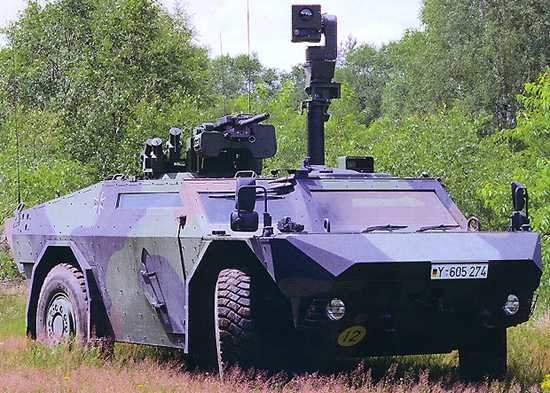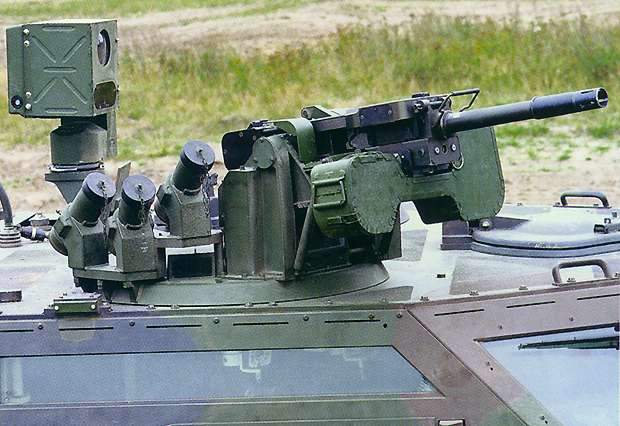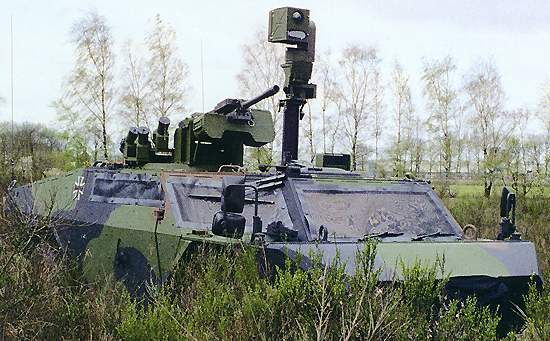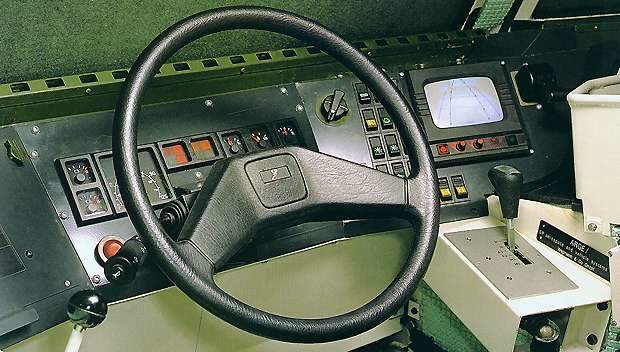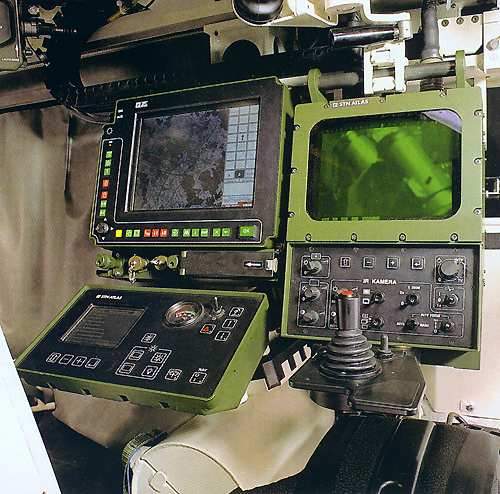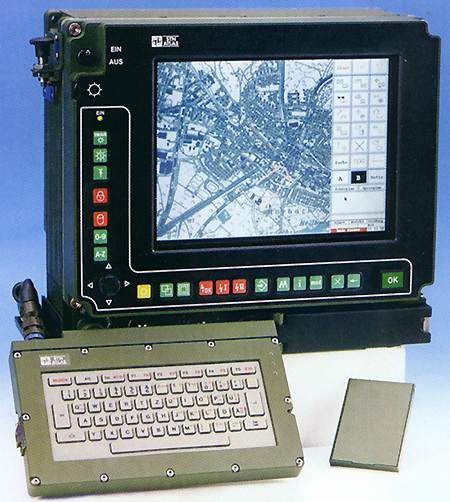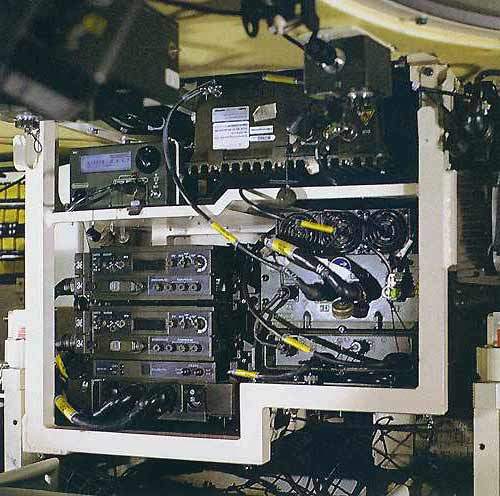
The Fennek lightweight wheeled armed reconnaissance vehicle
The Fennek armed reconnaissance vehicle, produced by Krauss-Maffei Wegmann (KMW) of Kassel, Germany and SP Aerospace and Vehicle Systems BV of The Netherlands (the ARGE Fennek consortium), has been developed for the Dutch and German Armies.
The prototype vehicle completed field trials in April 2000. In December 2001, a contract was signed for the combined procurement of 612 Fennek vehicles: 202 reconnaissance, 130 MRAT (medium-range anti-tank) and 78 general purpose versions for the Royal Netherlands Army; 178 reconnaissance, 24 combat engineer and four artillery observer versions for the German Army.
The vehicle is in production and the first vehicles were delivered to the Netherlands in July 2003 and to Germany in December 2003. The 100th vehicle for the Dutch Army was delivered in June 2006. Deliveries will continue through 2009. The vehicles will replace M113 vehicles in the Dutch Army and Luchs ARVs in the German Army.
SP Aerospace was declared bankrupt in August 2004 and a new company, Dutch Defence Vehicle Systems (DDVS), has been set up by KMW to maintain the workshare in the Netherlands.
Fennek light armoured 4×4 reconnaissance vehicle
The Fennek is a light armoured 4WD reconnaissance vehicle, operated by a three-man crew and deployed in units of two vehicles. A scout party equipped with this vehicle is able to operate independently for a period of up to five days.
In October 2006, Fennek vehicles of the Royal Netherlands Army were deployed to southern Afghanistan in support of the International Security Assistance Force (ISAF).
In November 2007, the German Army ordered an additional ten Fennek vehicles, for the army’s joint fire support teams (JFST). Each of the five teams requires two Fenneks. The manufacturing cost will be approximately €34m.
In May 2008, KMW announced that it was developing a two-engined variant of the Fennek, the generic platform Fennek 2 (GP-F2) with independent drive trains for the front and rear axles.
In October 2008, the first of 24 combat engineer Fennek variants was delivered to the German Army’s ‘Pioneer’ combat engineers.
In August 2009, the German Parliament budget committee approved the procurement of another set of ten Fennek vehicles for the JFST. The approval permits the formation of an additional five joint fire support teams equipped with Fenneks. The vehicles under second batch are expected to enter into service by the end of 2011.
Fennek command and control system
The tactical command and control system (TCCS) enables the reconnaissance vehicles to be integrated into the reconnaissance data information, command and control system. This is accomplished by means of digitised maps showing the position of the host vehicle, the target and the current battlefield environment.
This data is updated through HF and VHF radio data transmissions between the vehicle and the command post. EADS Radio Communications Systems of Ulm in Germany supplies the HRM 7000 short-wave radio system.
In October 2006, the first production Fennec with a new FuWES command and fire control system was delivered to the German Army. FuWES links the observation sensors to the vehicle and to other platforms enabling faster and more reliable transmission. Fennec vehicles already delivered to Germany will be retrofitted with the system.
Armament
The Dutch reconnaissance vehicles are armed with a 12.7mm machine gun, German vehicles with a 40mm automatic grenade launcher. The Dutch MRAT versions are fitted with the Rafael Spike MR (Gill) anti-tank missile. The gun mount is electrically controlled. The sighting system consists of a periscope derived from the PERI Z l7, which is currently in service. As an option the periscope can be upgraded with an image intensifier or other plug-in modules.
In September 2005, the Royal Netherlands Army placed an order with Aselsan of Turkey for 18 launcher systems for the Raytheon Stinger surface-to-air missile system, to be mounted on Fennek vehicles. The vehicles will replace the Gepard self-propelled air defence guns.
The launchers will be based on the Aselsan Pedestal Mounted Air Defence System (PMADS) in production for the Turkish armed forces. PMADS is a remotely controlled mount with a sensor package including infrared camera, TV camera and laser rangefinder.
The first Fennek SWP (Stinger weapon platform) was delivered in May 2007 and the system entered service in January 2009.
Observation
The reconnaissance vehicle’s observation system is the Rheinmetall Defence Electronics (formerly STN Atlas Elektronik) BAA which comprises a thermal imager, a CCD day vision camera and a laser rangefinder and is installed in a sensor head mounted on an extendable mast.
The sensor head can be controlled in azimuth and elevation and raised to a height of 3.29m above ground i.e. 1.5m above the vehicle roof. For observation from a concealed position, the sensor head can be tripod-mounted at an exposed location for remote operation up to 40m from the vehicle.
The sensor head is operated by means of the control unit in the vehicle or via the removed control unit from the concealed position. A hybrid navigation system consisting of an inertial unit and global positioning system (GPS) permits accurate determination of the vehicle position and the north direction. Determination of target coordinates is achieved using the system’s laser rangefinder and azimuth and elevation measuring equipment, together with the navigation system.
The forward position of the driver’s seat gives the driver a field of view greater than 180° through the windscreen and side windows. The rearview camera mounted at the back of the vehicle and a monitor integrated in the driver’s instrument panel allow rapid evasive manoeuvres to be carried out. The driver can use the cable winch to recover his own or another vehicle.
Self-protection
The vehicle has add-on all-round protection against 7.62mm AP rounds. Add-on armour protection can be selected to suit mission requirements. The crew compartment is protected against anti-personnel mines.
Nuclear, biological and chemical (NBC) warfare protection is integrated in the crew compartment air-conditioning system. The infrared signature is minimised through special exhaust ducting. The powerpack compartment is fitted with a fire extinguishing and warning system, which can be automatically or manually triggered.
Propulsion
The 179kW Deutz diesel engine provides a range of 860km and maximum speed of 115km/h. The automatic transmission and transfer unit provides selectable 4WD and limited slip differential. The H-layout of the driveline allows a very low height, with the power being transmitted to the wheels via angular and wheel gears.
The vehicle is able to negotiate 60% forward and 35% side slopes. The turning radius is 6.3m and the fording depth is 1m. A central tyre inflation system enables the driver to adjust tire pressure on the move to suit terrain conditions.

